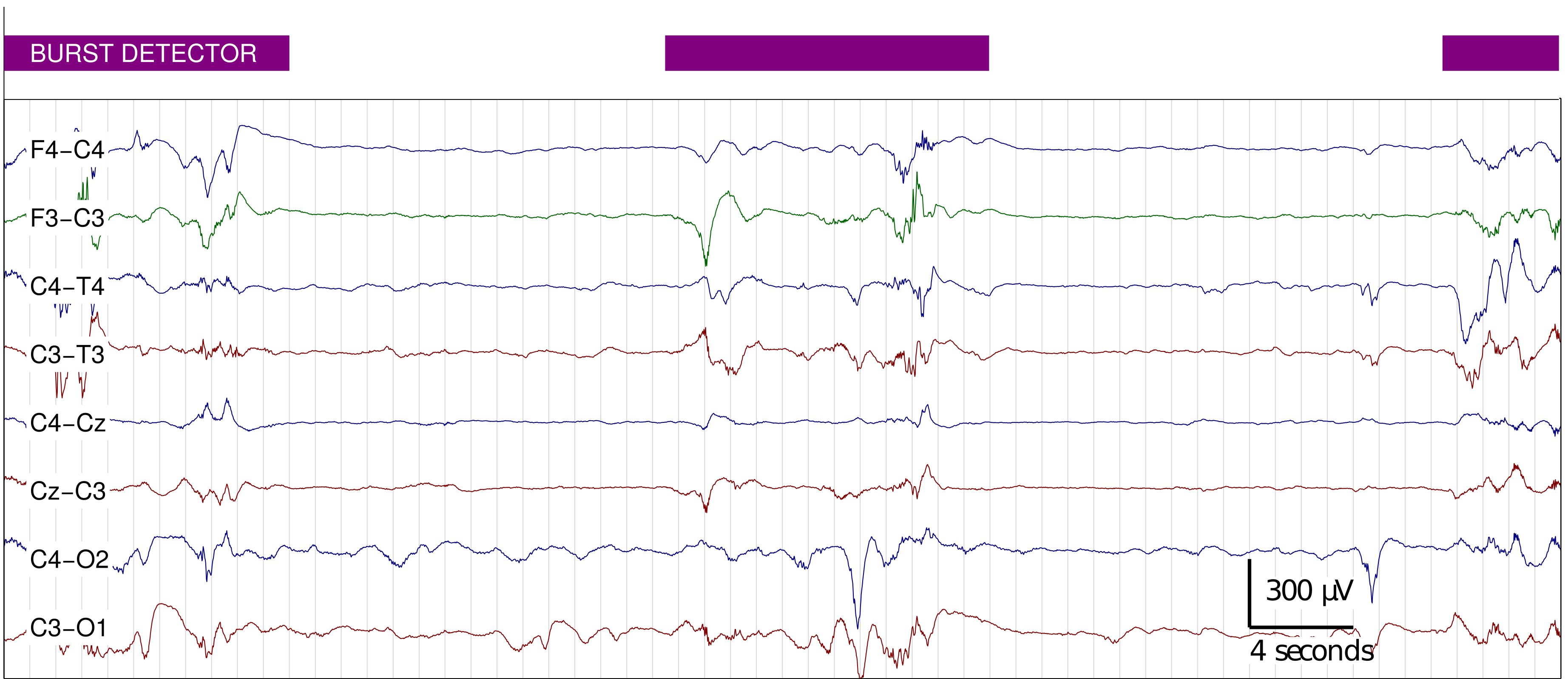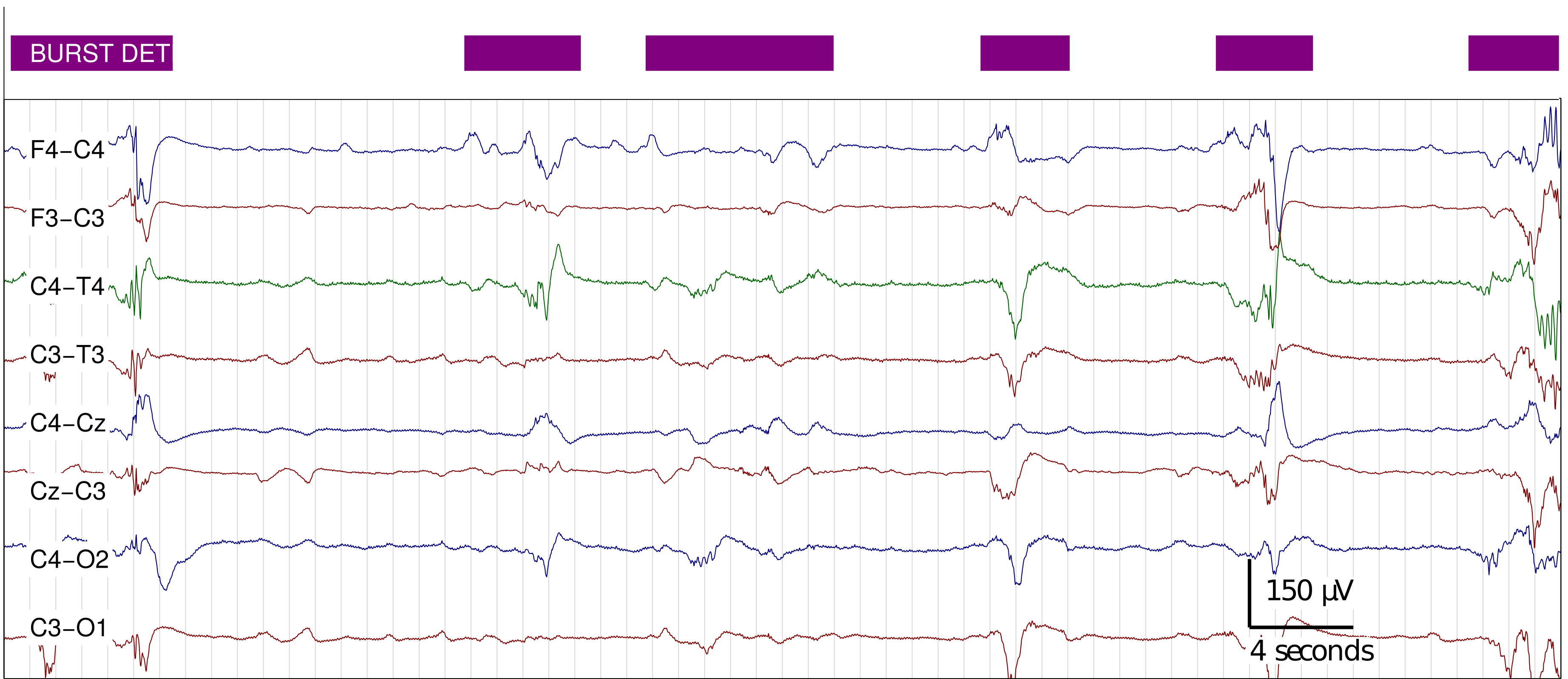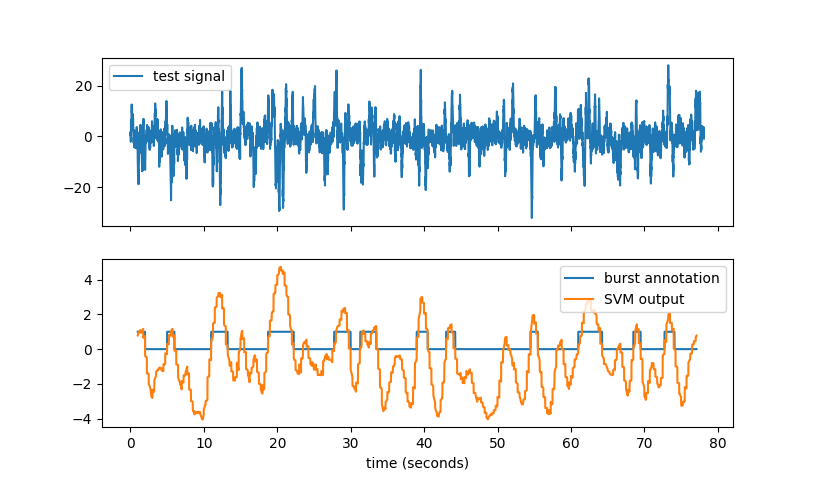Method to detect bursts on EEG recordings, as described in [1]. Detector uses a linear combination of multiple amplitude and spectral features. Developed and tested on EEG recordings from premature infants (<30 weeks gestational age) using a bipolar EEG montgage (F3-C3, F4-C4, C3-O1, C4-O2, C3-T3, C4-T4, Cz-C3, and C4-Cz). Detector operates on 1 channel only.
Requires Python 3 with with NumPy, SciPy, Matlablib, Numba, and Dataclasses packages.
To cite this software, please use reference [1].
Python version of the Matlab code.
Overview | Requirements | Example | Licence | References | Contact
A simple method to detect bursts in the EEG of preterm infants. The method was developed by assessing multiple frequency and amplitude features of bursts. Selected features were combined in a classifier (support vector machine). After a feature selection and training procedure, the detector consisted of eight features which are combined in a linear support vector machine. The code here implements this detector, which was trained on annotations from 1-channel of 10 minute EEG recordings from 36 preterm infants.
Developed and tested with Python 3.7. Requires:
- NumPy (developed with version 1.17.0)
- SciPy (developed with version 1.3.0)
- Matplotlib (developed with version 3.1.1)
- Dataclasses (developed with version 0.6)
- Numba (developed with version 0.46.0)
Generate a test signal:
from burst_detector import eeg_burst_detector, utils
N = 5000
Fs = 64
x = utils.gen_impulsive_noise(N)then run the burst detector:
burst_anno, svm_out = eeg_burst_detector.eeg_bursts(x, Fs)All Matlab files (.m files) have a description and an example in the header. To read this
header, type help <filename.m> in Matlab. Directory structure is as follows:
├── burst_detector # burst detector PACKAGE:
│ ├── eeg_burst_detector.py # main module
│ ├── bd_parameters.py # parameters for detector
│ ├── feature_set.py # generates the features
│ └── utils.py # miscellaneous functions
├── data
│ └── ellip_filt_coeffs.npz # filter coefficients
├── pics # images used in this readme
│ ├── burst_detector_impulsive_noise_example.png
│ ├── detector_example_for_website.png
│ └── detector_example_for_website_v2.png
├── demo.py # run the burst detector with a test signal
├── requirements.txt
├── LICENSE.md
└── README.md
-
JM O' Toole, GB Boylan, RO Lloyd, RM Goulding, S Vanhatalo, and NJ Stevenson, “Detecting Bursts in the EEG of Very and Extremely Premature Infants Using a Multi-Feature Approach”, Medical Engineering & Physics, vol. 45, pp. 42-50, 2017. DOI:10.1016/j.medengphy.2017.04.003
-
JM O' Toole and NJ Stevenson, “Assessing instantaneous energy in the EEG: a non-negative, frequency-weighted energy operator”, In 36th Annual International Conference of the IEEE Engineering in Medicine and Biology Society (EMBC), pp. 3288-3291, 2014. { paper | poster | code (Matlab), code (Python)}
John M. O' Toole
Neonatal Brain Research Group,
INFANT Research Centre,
Department of Paediatrics and Child Health,
University College Cork,
Cork University Hospital, Room 2.19 Paediatrics Building,
Cork, Ireland


